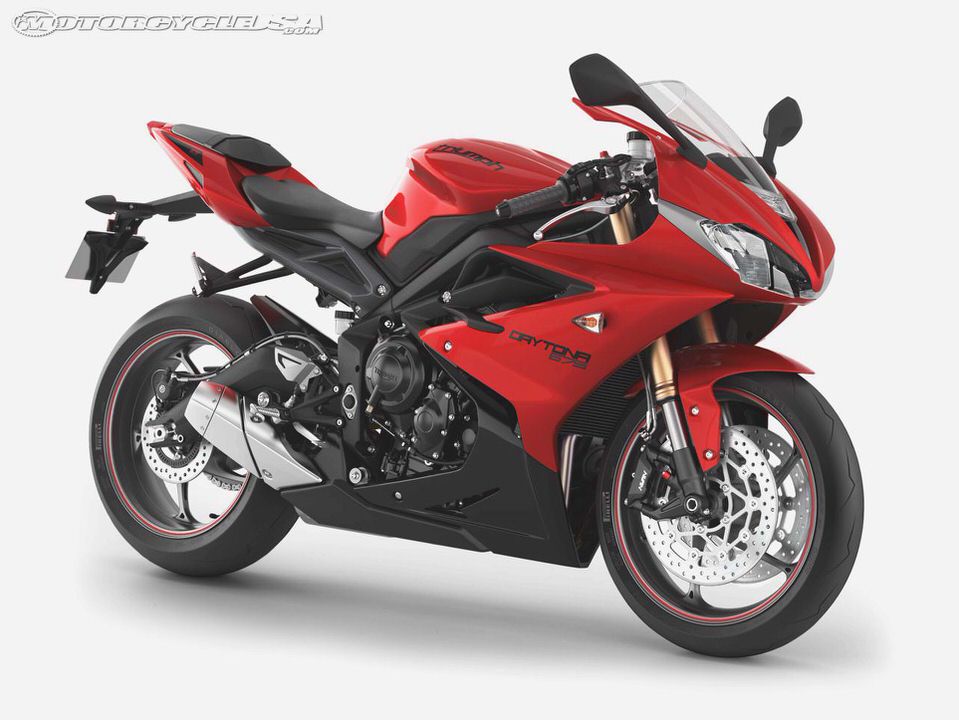
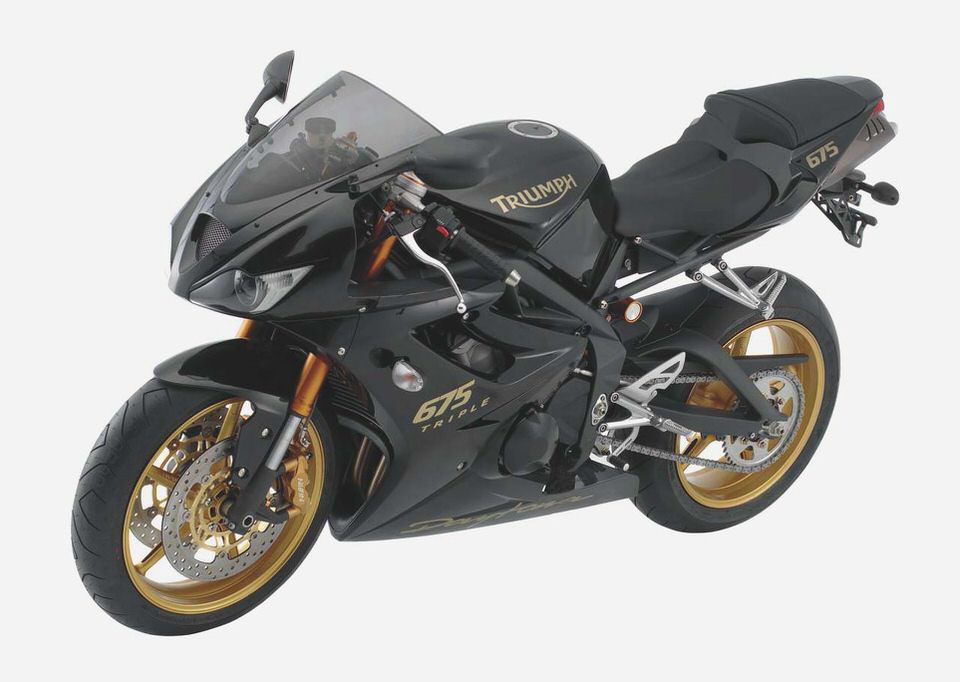
2006 Triumph Daytona 675
Specifications and Information – 2006 Triumph Daytona 675
With the 2006 model launch season in full swing, it was most enlightening to learn that the new 2006В Daytona 675 actually started life way back in 2001 as a feasibility study. This lead to a decision in early 2002 thatВ Triumph would build their own completely unique three-cylinder middleweight sportbike, one that would borrow nothing from any of their previous models.
It’s no secret that Triumph has come up a few quid short with their four-cylinder sportbikes over the years while attempting to match their far-eastern counterparts. So, by staying with their now trademark three-cylinder engine configuration, essentially creating their own niche, Triumph set about building the sportiest machine to ever roll out of the Hinckley factory.
With engine development underway and the chassis being designed, by early 2003 styling sketches were appearing. In a departure from previous models, these were produced in-house by the Triumph staff and really show the depth of talent that exists within the company. Stuart Wood, the principal engineer in charge of engine and chassis development, told us they were looking for a design that had longevity.
To this end, the frame follows the T595 series that began in 1997 by running over the top of the engine, and as a result is extremely narrow.
The all-new three-cylinder engine was up and running in May 2003, and by late 2004 a prototype bike was out making miles in the English countryside. Designed to be extremely compact, the 675cc capacity was deliberately chosen to give the new Daytona a distinct advantage over other middleweight sport bikes. Allowing for a much wider spread of torque and bigger midrange punch, it is also capable of kicking out some impressive power at the upper end of the rev range.
Coupled with a light, agile chassis, world-class brakes and suspension, while featuring the most aggressive styling package from Triumph yet, it would seem on the surface that all the bikes goals have been met.
The new three-cylinder engine powering the Daytona claims 123 hp @ 12,500 rpm and 53 lb-ft @ 11,750 rpm. It differentiates itself from its four-cylinder rivals with the unique characteristics of a Triple.
The all-new engine produces a claimed 123 horsepower at 12,500 rpm, with a peak torque figure of 53 foot pounds coming just 750 rpm lower at 11,750. What this doesn’t show is the near flat torque curve across the range that comes before this final spike. Compared to the latest generation of super-fours, this rev ceiling is a tad lower, but the three-cylinder is a different animal and pulls from a lot lower down.
The power doesn’t tail off on top, and the engine has some useful over-rev if you need it up to the 14,000-rpm rev limiter.
Compression is reasonably high at 12.65:1 and the 74 mm pistons move through a 52.3mm bore. They use a top ring that has a low-friction finish and ride on weight saving nut-less connecting rods. Up top in the cylinder head, the valves use a single spring, and on the exhaust side they are made from a nickel-based material known as Nimonic, which allows them to better handle high heat.
To permit the world’s press to sample the fruits of their labor, the MotoGP track at Sepang in Malaysia was picked by Triumph for the venue, with a road ride planned for the following day. This would give journalists an opportunity to mercilessly flog the new Triple on the long track and check it out on the street, giving me a chance to see how it stacks up to the Yamaha R6 that we tested recently in Saudi Arabia.

Arriving at the famous circuit under some very threatening skies, we were soon sorted into our respective groups, before a quick change into our leathers saw us circulating the track in the high temperatures and 100% humidity. With intermittent light rainfall, the word of the morning was caution as we made our first few laps.
The Malaysian MotoGP circuit of Sepang was chosen by Triumph as the place to let the curious moto-journos turn some laps on the new Triple.
Sepang International racetrack is a big circuit, with a wide variety of corners and two long, fast straights thrown in for top speed and ultra-hard braking. Making sure to stay as upright as possible while trying to get a feel for the surface and which way the track twisted and turned, the early laps didn’t allow me much time to think about the new Daytona. Beneath me, the silky smooth Triple burbled away with a healthy rasp from the track-only tail can that had been fitted for the test.
Super narrow and feather-light between my legs, by the time the lights came on to signal the end of the first session I felt right at home, and it was apparent there was enough grip to get serious.
Session number two was deemed dry, and with a little more circuit knowledge it was time to start getting rowdy.
During the press brief, Wood had gone into some detail to explain how Triumph wanted class-leading brakes on the 675, and with Nissin providing the four-piston calipers and radial master cylinder his wish was granted. These had their pistons treated for less friction and more feel, and they attack a pair of 308mm rotors.
At the end of the back straight, a wee peep at the small digital speedometer showed the bike hitting close to 150 mph before it was time to scrub speed for the tight 180 that led to the front straight. With just the lightest touch on the lever, I could wait comfortably until the 200-meter mark before feeling the near viscous bite of the brakes doing their stuff. Chasing a couple of Japanese journos all day, I was using the Nissin’s amazing capabilities to overcome the distance I was losing as the bike hauled my lard arse down the straights: Much like trying to keep up with our 90-pound editor, Duke Danger, whenever we are on the track together.
What was really nice about the system was the early lever travel worked perfectly for trail braking and slower speed maneuvers, especially on the road the following day. This gave me no end of confidence braking from a-buck-fifty at the end of the front straight, as I could quickly and easily weight the front wheel before really using the all the power the eight pistons afford.
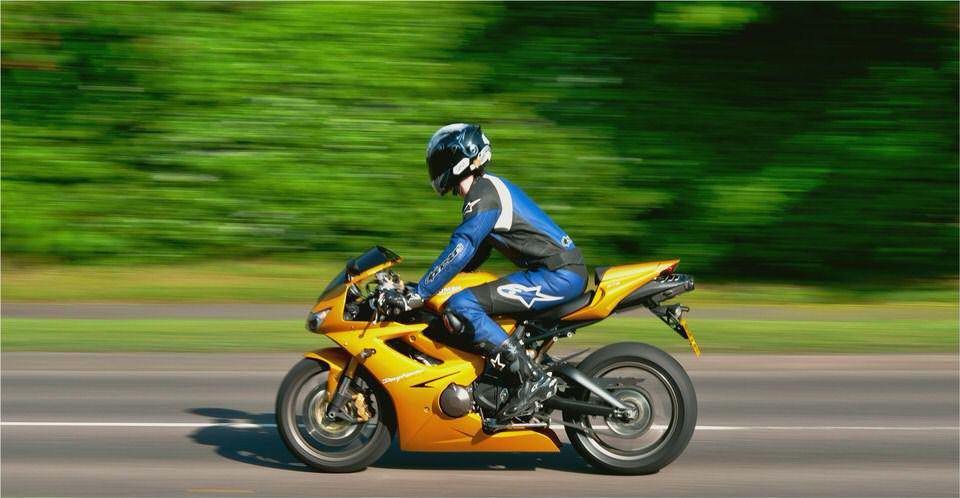
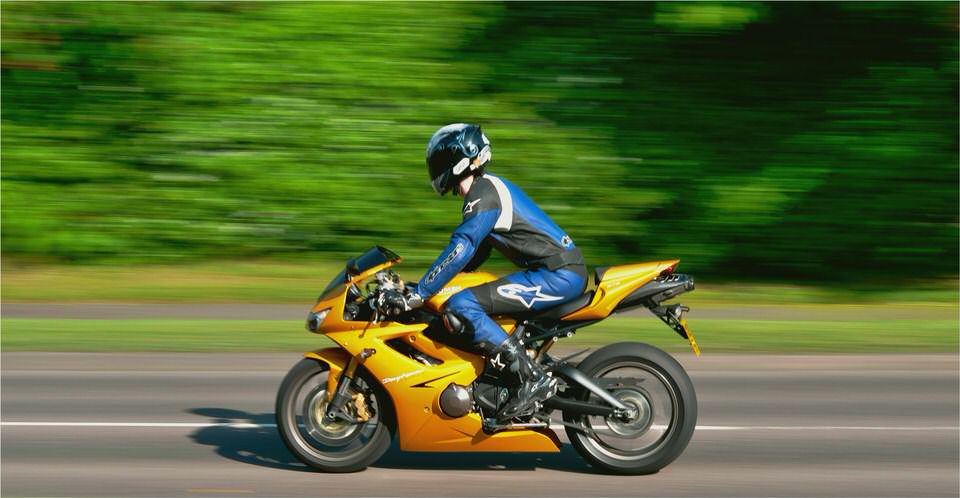
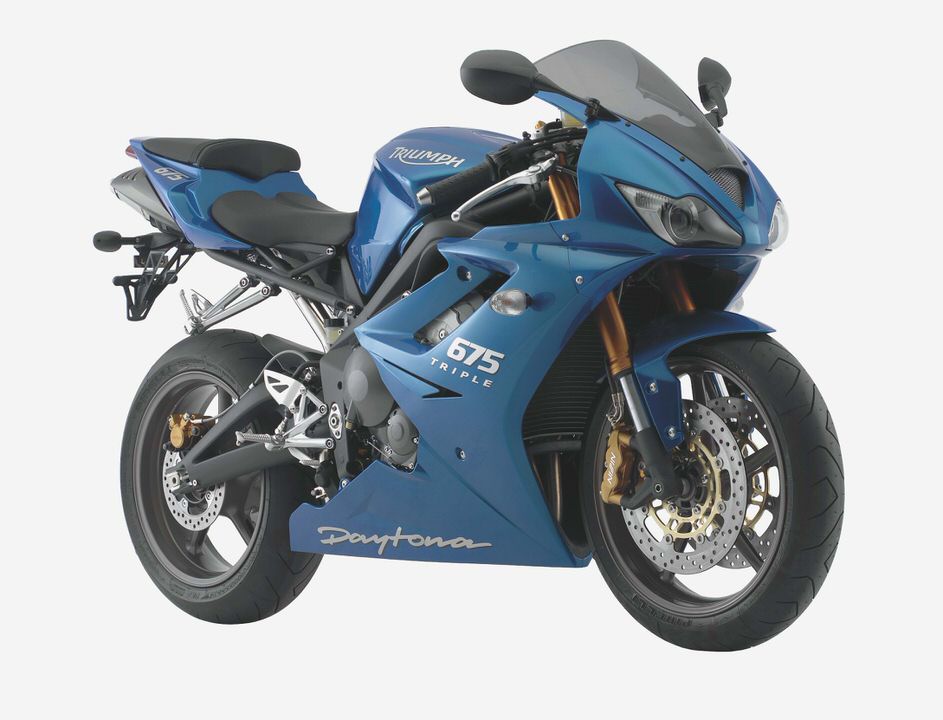
- 2011 Triumph Sprint GT – webBikeWorld
- Triumph Trophy
- 2011 Triumph Tiger 800 and 800XC: MD First Ride …
- Four Aces Cycle Supply Custom Built Triumph, BSA, Norton & Harley Davidson…
- Triumph Thruxton
